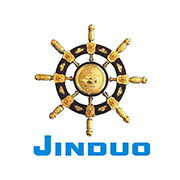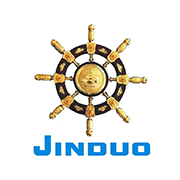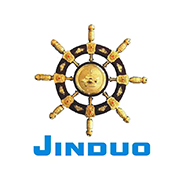news
Top 10 Tips for Optimizing Your Vessel Maintenance Schedule
Top 10 Tips for Optimizing Your Vessel Maintenance Schedule
Table of Contents
- Understanding the Importance of Vessel Maintenance
- Creating a Comprehensive Maintenance Plan
- Prioritizing Critical Systems in Maintenance
- Utilizing Technology for Maintenance Tracking
- Ensuring Regular Training for Crew
- Adopting a Proactive Maintenance Approach
- Documenting Each Maintenance Task
- Conducting Regular Inspections and Audits
- Establishing Vendor Relationships for Spare Parts
- Monitoring Performance Metrics
Understanding the Importance of Vessel Maintenance
Vessel maintenance is a critical aspect of maritime operations. Regular upkeep not only ensures safety but also significantly impacts operational efficiency and cost-effectiveness. Understanding the importance of vessel maintenance can help you avoid costly repairs and extend the lifespan of your maritime assets. By prioritizing maintenance, you ensure that your vessel remains in optimal condition, reducing the risk of unexpected breakdowns during operations.
Creating a Comprehensive Maintenance Plan
A well-structured maintenance plan is the cornerstone of effective vessel upkeep. Start by **defining maintenance frequency** for each system on your vessel. This includes daily, weekly, monthly, and annual tasks. Create a checklist for each maintenance activity to ensure nothing is overlooked.
Consider incorporating a **calendar system** that alerts your crew of upcoming maintenance tasks. This proactive approach not only keeps your vessel in peak condition but also allows for efficient scheduling of resources and manpower.
Breaking Down Maintenance Tasks
When designing your maintenance plan, break down tasks into manageable components. For instance, divide engine maintenance into sub-tasks like oil changes, filter replacements, and inspections of critical components. This detailed approach helps in keeping track of all necessary actions and reduces the chances of missing vital maintenance chores.
Prioritizing Critical Systems in Maintenance
Identifying and prioritizing critical systems on your vessel is essential for effective maintenance. Focus on systems that are vital for the safe operation of your vessel, such as engine systems, navigation equipment, and safety gear.
Risk Assessment
Conduct a comprehensive risk assessment to determine which systems are most likely to fail and which failures would have the most severe consequences. By prioritizing maintenance for these systems, you can mitigate risks and ensure the safety and reliability of your vessel operations.
Utilizing Technology for Maintenance Tracking
In today’s digital age, utilizing technology can greatly enhance your vessel maintenance schedule. Implementing a **Computerized Maintenance Management System (CMMS)** allows you to track maintenance tasks, schedule inspections, and monitor the performance of various systems.
Benefits of CMMS
1. **Automated Alerts**: Receive notifications for upcoming maintenance tasks, ensuring timely interventions.
2. **Data Analysis**: Analyze historical data to identify trends in equipment performance and maintenance needs.
3. **Resource Management**: Manage spare parts inventory, helping to avoid stockouts and delays during maintenance periods.
Ensuring Regular Training for Crew
A knowledgeable crew is essential for effective vessel maintenance. Regular training sessions equip your crew with the skills and knowledge they need to perform maintenance tasks efficiently and safely.
Types of Training to Consider
1. **System-Specific Training**: Focus on critical systems such as propulsion, electrical, and safety equipment.
2. **Safety Training**: Emphasize safety protocols and emergency procedures to ensure crew safety during maintenance tasks.
3. **New Technologies**: As technology evolves, provide training on new equipment and maintenance tools to keep your crew updated.
Adopting a Proactive Maintenance Approach
Proactive maintenance, often referred to as preventive maintenance, involves performing maintenance tasks before issues arise. This approach can significantly reduce downtime and repair costs.
Implementing Predictive Maintenance
Utilizing predictive maintenance techniques, such as monitoring equipment conditions through sensors, allows you to anticipate potential failures. By analyzing data trends, you can schedule maintenance before a failure occurs, ensuring your vessel remains operational and efficient.
Documenting Each Maintenance Task
Accurate documentation of maintenance tasks is crucial for several reasons. It provides a record of what has been done, identifying patterns in maintenance needs and system performance.
Best Practices for Documentation
- **Use Checklists**: Implement checklists for each maintenance task to ensure consistency and completeness.
- **Maintenance Logs**: Maintain detailed logs that include dates, tasks performed, and any issues discovered during maintenance.
- **Review Documentation Regularly**: Regularly review maintenance records to identify trends and areas for improvement.
Conducting Regular Inspections and Audits
Regular inspections and audits of your vessel are critical components of an effective maintenance strategy. These evaluations help identify potential issues before they escalate into significant problems.
Types of Inspections
1. **Routine Inspections**: Conduct daily checks on critical systems and safety equipment.
2. **Comprehensive Audits**: Schedule periodic audits to assess the overall condition of your vessel and compliance with safety regulations.
3. **Third-Party Inspections**: Engage third-party experts to conduct external audits, providing an objective assessment of your maintenance practices.
Establishing Vendor Relationships for Spare Parts
Building strong relationships with vendors ensures quick access to spare parts and components needed for maintenance. This can significantly reduce downtime and improve operational efficiency.
Tips for Choosing Vendors
- **Evaluate Reliability**: Choose vendors known for reliability and timely deliveries.
- **Quality Assurance**: Ensure that vendors offer high-quality parts that meet industry standards.
- **Negotiate Terms**: Establish favorable terms for bulk orders or long-term contracts to manage costs effectively.
Monitoring Performance Metrics
Monitoring performance metrics is essential for analyzing the effectiveness of your maintenance practices. By tracking key performance indicators (KPIs), you can assess the health of your vessel and identify areas for improvement.
Key Metrics to Track
1. **Downtime**: Measure the amount of time your vessel is out of service due to maintenance issues.
2. **Maintenance Costs**: Track total maintenance expenditures to identify trends and budget accordingly.
3. **Mean Time Between Failures (MTBF)**: Monitor the average time between equipment failures to assess reliability.
Frequently Asked Questions (FAQs)
1. What is the most critical aspect of vessel maintenance?
The most critical aspect of vessel maintenance is ensuring the safety and reliability of all systems. Regular inspections and a proactive maintenance approach are essential to achieve this.
2. How often should I perform maintenance on my vessel?
The frequency of maintenance tasks varies depending on the system and its usage. However, it's advisable to follow a structured maintenance plan that includes daily, weekly, monthly, and annual tasks.
3. What are the benefits of using technology in vessel maintenance?
Utilizing technology such as a CMMS helps streamline maintenance tracking, improve data analysis, and enhance resource management, ultimately leading to more efficient maintenance practices.
4. How can I ensure my crew is adequately trained for maintenance tasks?
Regular training sessions focused on system-specific knowledge, safety protocols, and new technologies are essential for keeping your crew informed and capable.
5. Why is documentation important in vessel maintenance?
Documentation provides a comprehensive record of maintenance tasks performed, helping to identify trends, streamline processes, and ensure compliance with safety regulations.
Conclusion
Optimizing your vessel maintenance schedule is vital for ensuring safety, efficiency, and the longevity of your maritime assets. By implementing these **top 10 tips**, you can create a robust maintenance plan that prioritizes critical systems, utilizes technology, and fosters a knowledgeable crew. Regular inspections, thorough documentation, and strong vendor relationships further enhance your maintenance strategy. Embracing these practices not only minimizes downtime but also significantly contributes to the overall success and reliability of your vessel operations.
Other news
Exploring the Benefits of Used Commercial Vessels for Your Transportation Needs
When it comes to the transportation industry, the choice of vessels plays a crucial role in operational efficiency and cost-effectiveness. Used commercial vessels have gained popularity among businesses seeking to optimize their maritime logistics. Purchasing a pre-owned vessel can offer several benefits that are both practical and financially savvy. One of the foremost advantages of acquiring a u
Exploring the Efficiency of Self Unloading Bulk Carriers: Revolutionizing Maritime Transport
Exploring the Efficiency of Self Unloading Bulk Carriers Table of Contents Introduction to Self Unloading Bulk Carriers History and Evolution of Self Unloading Bulk Carriers Design Features of Self Unloading Bulk Carriers Operational Efficiency of Self Unloading Bulk Carriers Advantages Over Traditional Bulk Carriers Environmental Impact and Sustainability Technological Advancements
Understanding the Significance of 5000 DWT Bulk Carriers in Maritime Transport
Bulk carriers are a vital component of the maritime transport sector, particularly when it comes to the efficient movement of solid bulk commodities. One of the most commonly utilized classes of these vessels is the 5000 DWT (Deadweight Tonnage) bulk carrier. Understanding their specifications and advantages can provide valuable insights into their significance within the shipping industry. A 5000
Privacy
The Software respects and protects the personal privacy of all users of the Services. In order to provide you with a more accurate and personalized service, the Software will use and disclose your personal information in accordance with this Privacy Policy. However, the Software will treat such information with a high degree of diligence and duty of care. Except as otherwise provided in this Privacy Policy, the Software will not disclose or provide this information to third parties without your prior permission. The Software may update this Privacy Policy from time to time. You will be deemed to have agreed to this Privacy Policy in its entirety when you agree to the Software Service Use Agreement. This Privacy Policy is an integral part of this Software Service Use Agreement. 1. Scope of ApplicationIn your use of the Software's network services, the Software automatically receives and records information on your cell phone, including, but not limited to, your health data, the language used, the date and time of access, information on hardware and software characteristics, and data on webpage records of your needs; 2. Use of InformationAfter obtaining your data, the Software uploads it to the server to generate your leaderboard data so that you can better use the Services. The Software will upload your data to the server to generate your ranking data so that you can use the service in a better way. 3. Information Disclosure 3.1 The Software will not disclose your information to untrusted third parties. 3.2 In accordance with the relevant provisions of the law, or the requirements of administrative or judicial bodies, disclosure to third parties or administrative or judicial bodies; 3.3 If you appear to violate the relevant Chinese laws, regulations or relevant rules, it is necessary to disclose it to a third party; 4. Information Storage and Exchange The information and materials collected by the Software about you will be stored on the servers of the Software and/or its affiliates. The information and data may be transferred to and accessed, stored and displayed outside of your country or region or the country in which the Software collects the information and data. 5. Information Security When using the Software's network services to conduct online transactions, you will inevitably disclose your personal information, such as contact information or postal address, to the counterparty or potential counterparty. Please protect your personal information and provide it to others only when necessary. If you find that your personal information has been compromised, please contact the software's customer service immediately so that the software can take appropriate measures.













